Pop Up, Tune In Leverage Popup Surveys to Maximize Engagement
Read More
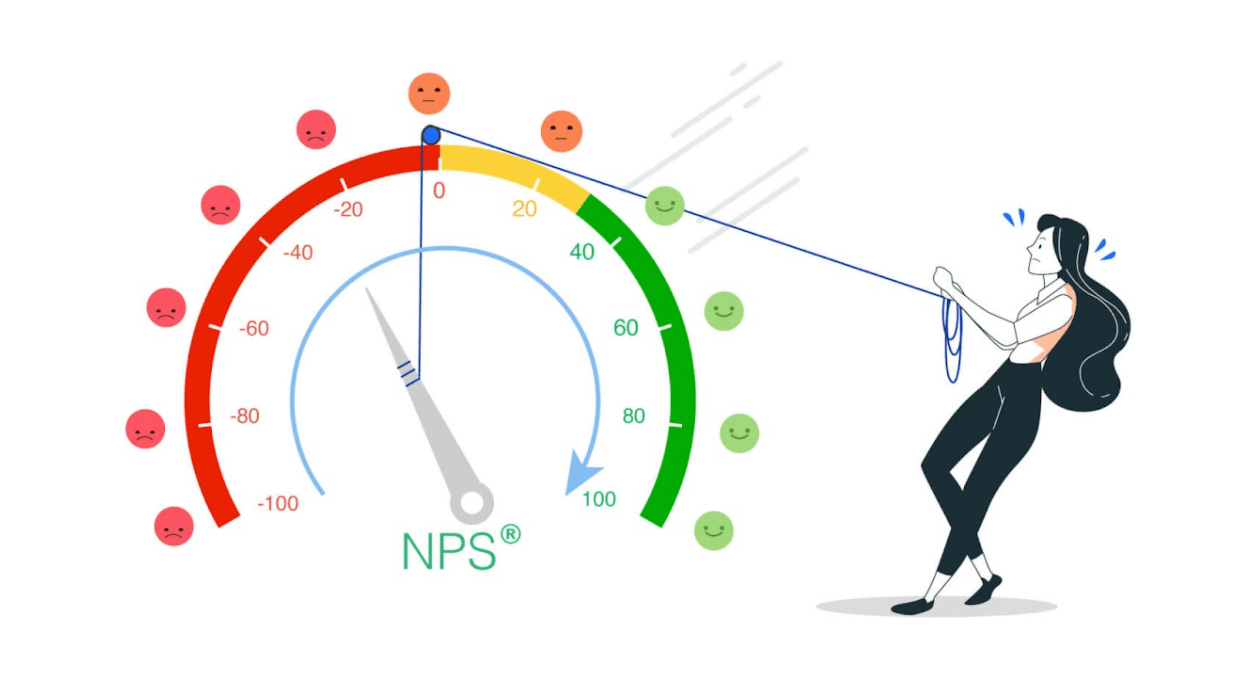
Customer experience has moved from being a competitive differentiator to a key business imperative. Companies that lead in customer experience are now outperforming laggards by nearly 80%.
NPS is a critical business KPI that tells you how likely your customer is to recommend your product or service to others. It is the key predictor for gauging customer retention and loyalty. It helps you identify what is working for you and what is not!
Given its significance, how do you improve your Net Promoter Score?
How can you convert these unhappy customers into brand advocates or encourage your promoters to do positive word of mouth and bring referrals? How can you increase your customer base, revenue, and customer loyalty?
Let us help you get the answers to all these questions.
Let’s jump right in!
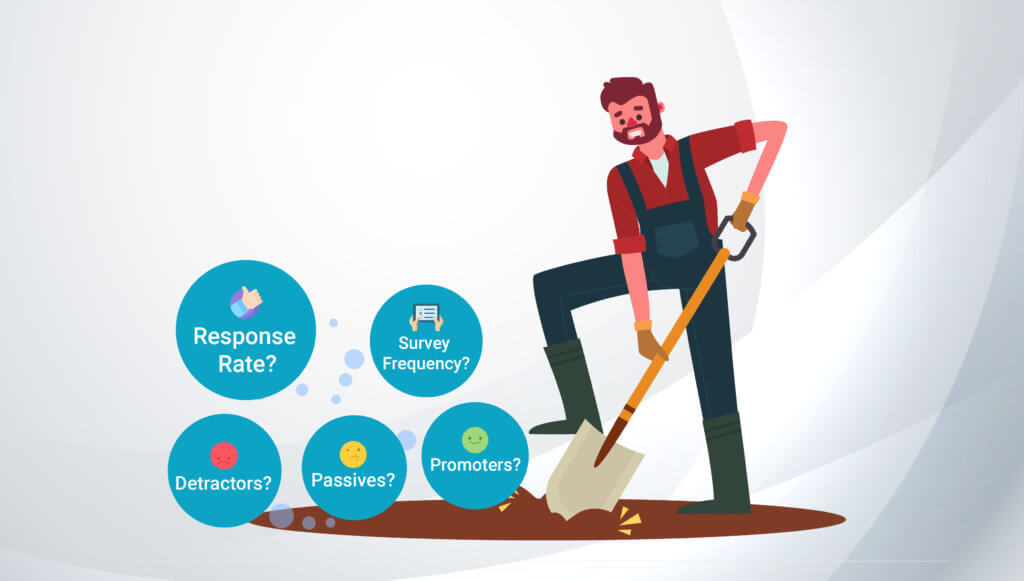
The first step to improving your NPS score is to understand the CURRENT STATE of your NPS Program. Ask yourself a few questions. The most important of all is, ‘Are you making use of your feedback?’ Sometimes your customers’ valuable feedback is just lying there and no one is using it! Then what is the point of taking the feedback?
Then, understand the structure of the current NPS program.
What is the current response rate? At what frequency are you sending the surveys? Are you capturing feedback at all the relevant touchpoints/customer interactions handled by multiple teams? Are you asking for feedback from the right people and through the right channel? And at last, are you taking the required action?
Knowing what is happening in your organization and how you are interacting with the detractors, promoters, and passives is really important. Gather this data before moving forward.
So dig in!

Depending on the size or stage of your organization, the CXO, CMO, CPO, or CCO (whoever is leading the CX initiatives) will call for an executive meeting to involve other stakeholders together along with the CEO. This meeting aims to define a realistic NPS goal and align the entire organization toward achieving that.
It is important to define a realistic goal for your company and not just any number. For example, if your current NPS is 30 and you want to take it to 60, is it possible in 3 months? Will you be able to capture, analyze, and take action on tons of feedback in such a short time? No.
That’s why it is critical to set a realistic goal for your entire company and each team within.
Create a FREE NPS program with SurveySensum
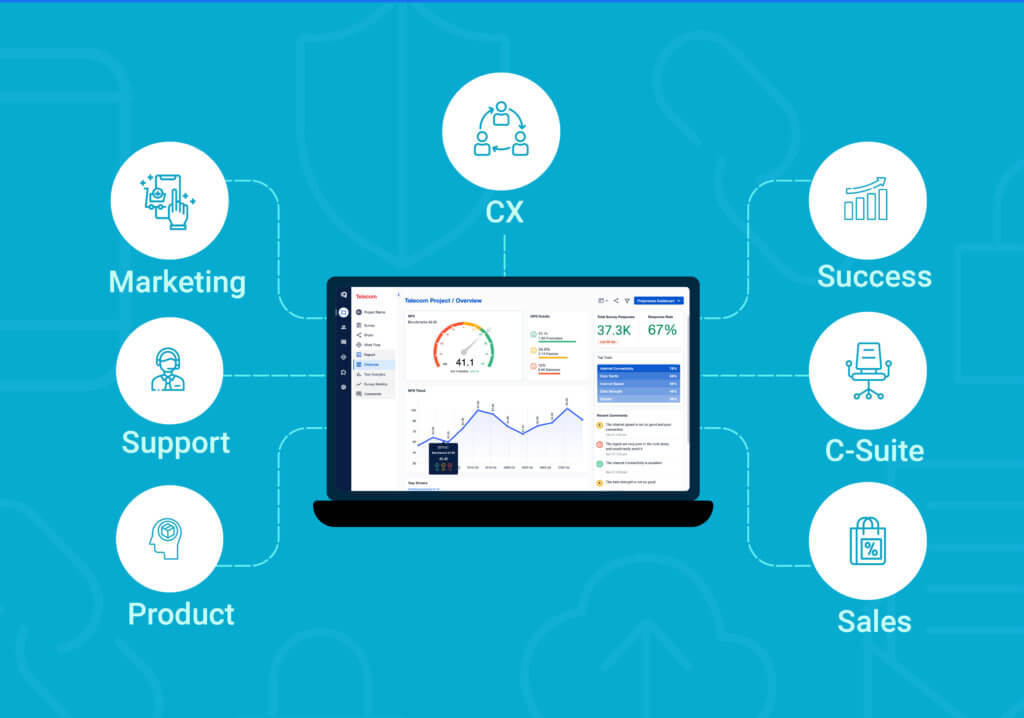
Improving NPS is not a one-man job. The entire organization needs to get on board. Every member of the organization needs to understand why it is important and what they can do to achieve this goal.
But, getting their buy-ins is not easy! That’s why any CX program is driven by the top leadership and the CXO, CCO, or CMO drives it across the organization. They get the team leaders’ buy-in and set the KPI for each department based on the global NPS goal.

The adoption should be from the top to the bottom. To drive the overall NPS score of the company, you need to drive the NPS for each department. Why?
Because how a CSR treats your customer, how good is the quality of the product, and how responsive is the support team, everything impacts the customer experience. That’s why, NPS is measured at every touchpoint of marketing, sales, product, after-sales, onboarding, support, and renewal.
Also, every department should have a specific target to achieve. Why? Let’s say, the target is 60 for all the departments. The current NPS of the sales team is 50 so it is easier for them to jump to 60. However, the support team’s current NPS is 22, so it is difficult for them to achieve 60. The challenge here is for the CXO to communicate what actions need to be taken by each department to achieve the global NPS goal.
In every QBR meeting, discuss the NPS score for each department. Understand what challenges they are facing and what action needs to be taken to drive the NPS. Use our NPS calculator to find your NPS score now!
Also, not everyone will give you the buy-in, you need to start by prioritizing the journey with the highest impact.
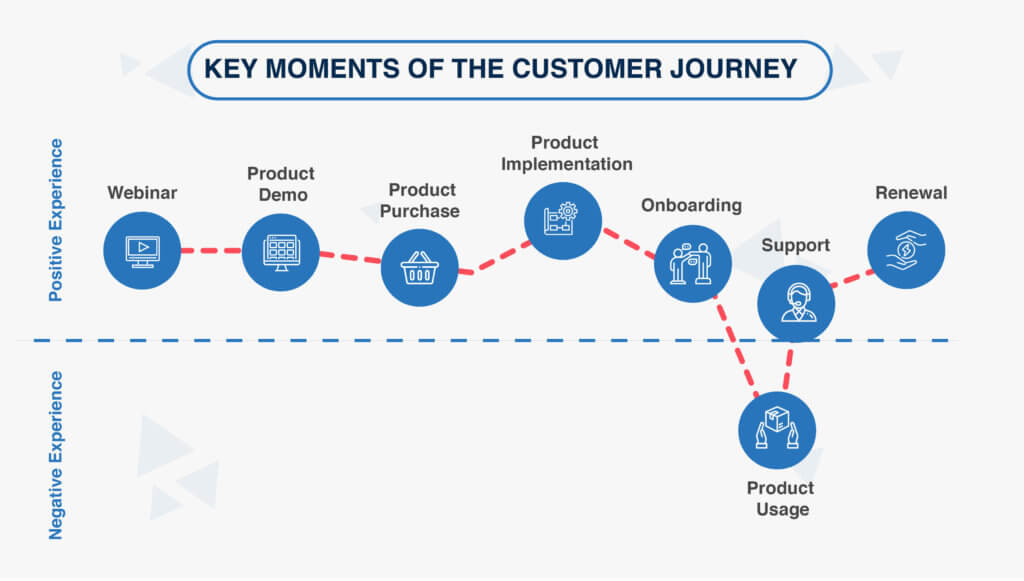
Understanding customer feedback at individual touchpoints won’t help you. To truly understand the root cause of the problem, you need to get the full picture of customer behavior by analyzing the entire customer journey.
Your customers will have different journeys as per the engagement level and touchpoints. Do a comprehensive customer journey mapping to know your buyers’ persona, understand their goals, map out the touchpoints, and identify their pain points.
Identify the journey that is driving the net promoters and net detractors. Find out the key milestone and preferred touchpoints of the customers. Segment them based on your business KPIs such as net revenue, CLV, retention, or churn rate. Identify the key moments where your customers are most unhappy. Prioritize them and create customized strategies to address each issue.
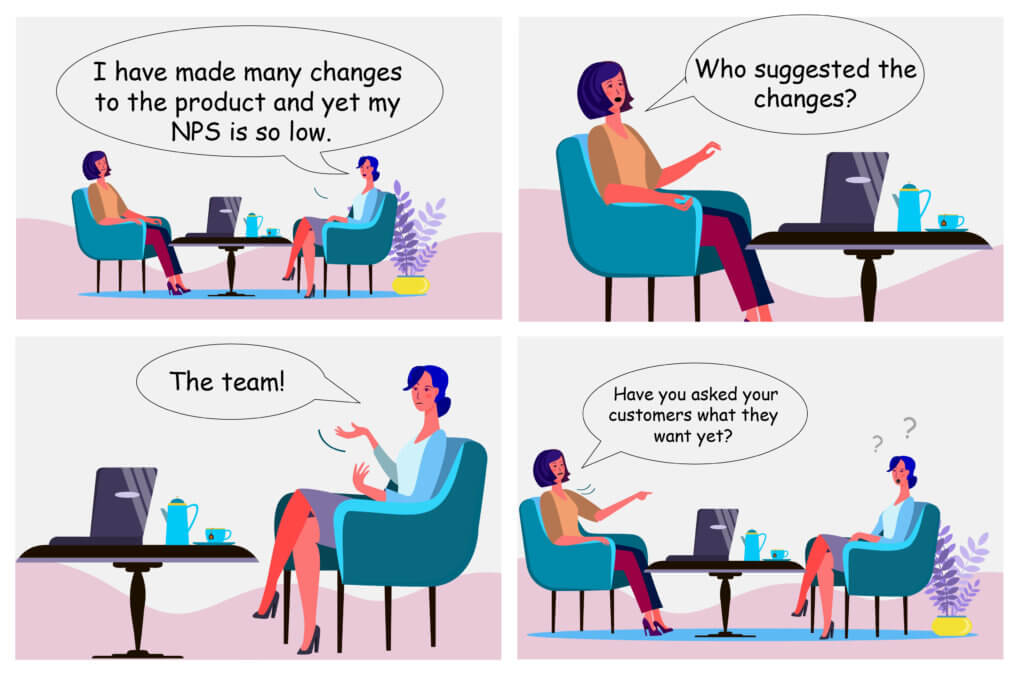
Now, make an efficient customer-driven plan on how to create adoption and increase the Net Promoter Score in the organization. Define the touchpoints to cover the channel of engagement, customer segment, and frequency of the survey.
Design the CX program such that insightful actions can be taken. Create role-based dashboards, and trigger-based notifications so that each feedback will be shared with the concerned teams to take prompt action.
Further, define the plan of action on the feedback that includes the workflow of the action, who’ll lead and review, and what all questions will be sent in a survey.
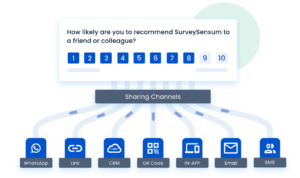
Choosing the right channel is also important to improve your NPS score.
While most companies choose emails since it’s easier for them to share the surveys, it’s not always a best practice to do so. There are several other methods to try out, especially WhatsApp surveys.
Connect with your customers through the right channels and increase your response rate, thereby improving your NPS score. Once you have selected the channels it’s time to launch the survey.

Here’s the ideal way to launch the NPS survey so you receive maximum responses.
STEP 1: Craft a beautiful and personalized NPS survey and white-label the ‘from name’.
STEP 2: Send the NPS survey at the right time. Some brands when begin taking their customer feedback, send NPS surveys at the wrong time like after a support interaction, which is plain wrong. NPS was built to measure customer perception of the brand, not the interaction. Send the survey when the customer has received enough value from your brand to recommend it to someone.
STEP 3: Send the NPS survey to the right channel. Recognize the channels that your customers prefer. Is it your app, SMS, email, or even WhatsApp? Because you’d be sending the surveys over email while your customers are on WhatsApp. This won’t give you enough response rate to get the actual NPS number.
STEP 4: Never ignore the follow-up question. NPS in itself is just a thermometer that tells you whether you’re sick or not. It has no value if you don’t understand the reason for that number. So look at the verbatim to see where is the problem, and why it is happening so that you can decide what to do about it.
STEP 5: Review your VOC dashboard and analyze the performance of your product or service at all touchpoints. Identify the detractors, passives, and promoters, and go in-depth in the open qualitative feedback to understand the sentiment of the customer and analyze if the problem is in a specific product, service, or channel.
STEP 6: Combine CSAT and CES with NPS in the customer journey. NPS tells you about overall brand loyalty and what creates brand loyalty. When your customers have consistent, high-quality experiences at every interaction in their customer journey.
So when they connect with you over your app or call your support, use CSAT or CES to see what is happening on that touchpoint.
STEP 7: Take action on CSAT/CES data. Now it’s time to improve those interactions where customers are not happy in the customer journey. Set up monthly meetings with stakeholders of those interactions and discuss what you found in the CSAT verbatim and what needs to be done.
STEP 8: Communicate the action plan. Send your customers newsletters, and magazine articles and let them know (You told us X and we Did XX) so they feel that you care.
STEP 9: At last, measure the NPS over time and you will see it rising point by point.
Let’s dig in further to understand what you should do with detractors, passives, and promoters to increase the Net Promoter Score.
Create a FREE NPS program with SurveySensum
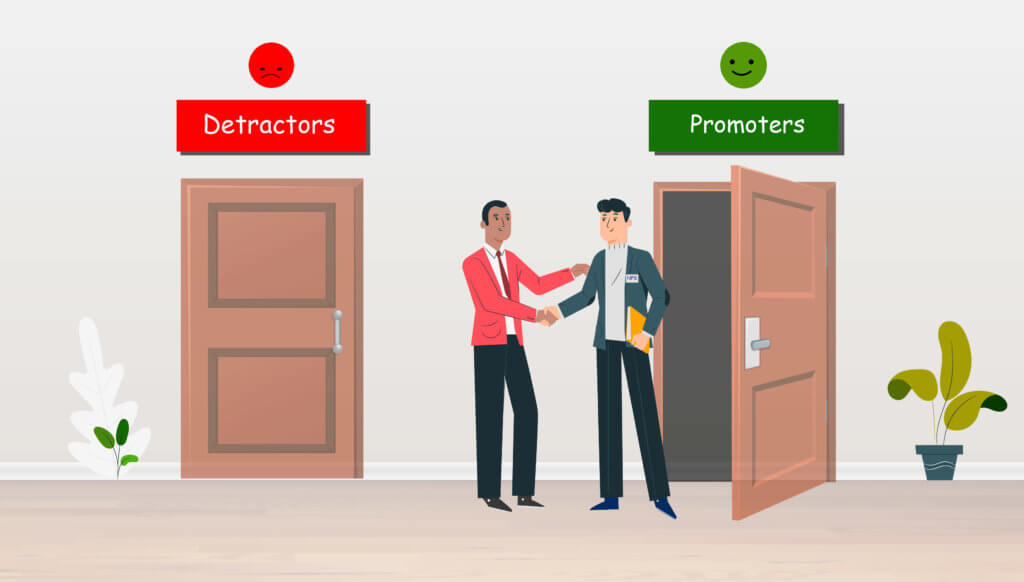
Detractors are critical for your business. They are the product stabilizers! They are the customers who will share honest reviews about your product, find the loopholes in it, and give you opportunities to improve it.
But how can you convert them into promoters?
Here’s how!
Follow-up 1: It is critical to engage with your detractors. Especially after they have given you a low score. Promptly, reach out to them to show them that you care about how they feel.
Follow-up 2: After the first follow-up, identify the themes and understand the issue with your internal teams. Once themes are discussed, the concerned team should follow up with the customers talking about those themes to understand the root cause of the problem and take the required actions.
But how can you do it?
Finn Cardiff, CEO, and Founder of Beachgoer shared his experience with NPS follow-ups. He said, “For an eCommerce company such as ours, one thing that has helped improve our NPS score is when we started to implement a feedback loop. For those who have given us a lower score, we follow up with them to know the reason behind and we use Voice of the Customer to improve our customer service. For instance, we learned to sell creatively but softly. We still offer same-day shipping despite the pandemic and we’ve made changes in the buyer’s journey experience to be more convenient. It’s going beyond self-interest and profit-making that you can dig deeper into the feedback loop and use it to your customer’s advantage.”
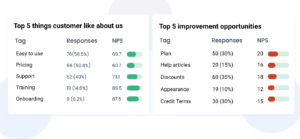
The first step to increasing the Net Promoter Score is to know the problems of your customers and take action on them. To achieve the same, deep dive into the customers’ open responses and run text and sentiment analysis. Create a set of common topics and subtopics related to the product’s offerings, track the sentiment of the customers, identify the themes, and make a plan of action.
Plan a monthly meeting where all the departments discuss and prioritize CX initiatives based on themes identified from the open-ended, verbatims, and decide who will drive the specific initiative, timelines of it, etc.
Connecting your experience data with your operational data will give you a boost! If you are not doing it, you are not getting the likelihood of improvement in your business.
Your NPS program will yield far more significant insights when you’ll connect your experience data with your operational data residing in your CRM. You can deep dive into the collated data to identify the problem and take action on it.
Link your business KPIs with your NPS programs depending on which stage you are at and what is more important to you; be it churn, retention, or net revenue. Understand detractors at all touchpoints across the channel and prioritize them considering your business outcome.
Your sales, marketing, and support teams are the ones in touch with your customers. Empower them with insightful NPS data. But how can you do it?
Identify common themes from qualitative feedback with sentiment analysis. Prioritize the issues, categorize them based on the departments, and trigger a team notification to take instant action.

Your customer support can make or break your Customer Experience as they are the ones that engage with the customers on a daily business. They need to know how to build relationships with the customers and their sentiments. They should be able to care for and empathize with the customer’s issue.
They need to be calm, patient, and knowledgeable, should know the product inside out, and have the authority to make instantaneous decisions.
Don’t communicate the problems on an individual level rather empathize with the customer and get rid of the issue from the core. So, when the respondents revisit your brand and see that they have been heard, it will boost their loyalty and trust in you.
Bruce Hogan CEO at SoftwarePundit suggests that you need to fix the major drivers of dissatisfaction. He comments, “NPS surveys are likely to surface issues across the entire customer experience, which means that several internal teams will need to take ownership over fixing specific customer issues. This can range from updating marketing copy to fixing product or service issues to improving customer service response time. A best practice is to complete the NPS survey prior to quarterly planning so that issues found can be properly prioritized in each team’s goals for the following quarter.”
There is nothing worse than going back on your word. If you promised something to your customer, deliver on it!
Three things motivate your customers to be with you. Functional value, emotional quotient, and social value. To deliver these three, your product needs to stand out against your competitors, your team needs to build emotional value with the customer, and your product needs to thrust their social status.

If a customer is reaching out to you for any support at any point or channel, provide them with the help they are seeking. They are making an effort of reaching out and they are unhappy with your product. It is imperative to provide them with the solution right then and there.
This is a simple and effective way to create brand ambassadors and increase the Net Promoter Score. You are giving your customers the solution and satisfying their needs right then and there. They will be more than happy. And if resolved properly, you have turned a detractor into a promoter successfully and may have created a brand advocate!

The next step after following up with your detractors is to take the required action on their feedback. Make sure you inform them that you have resolved their problem. The most relevant step of all, this will not only convert your detractors into promoters but also create brand advocates.
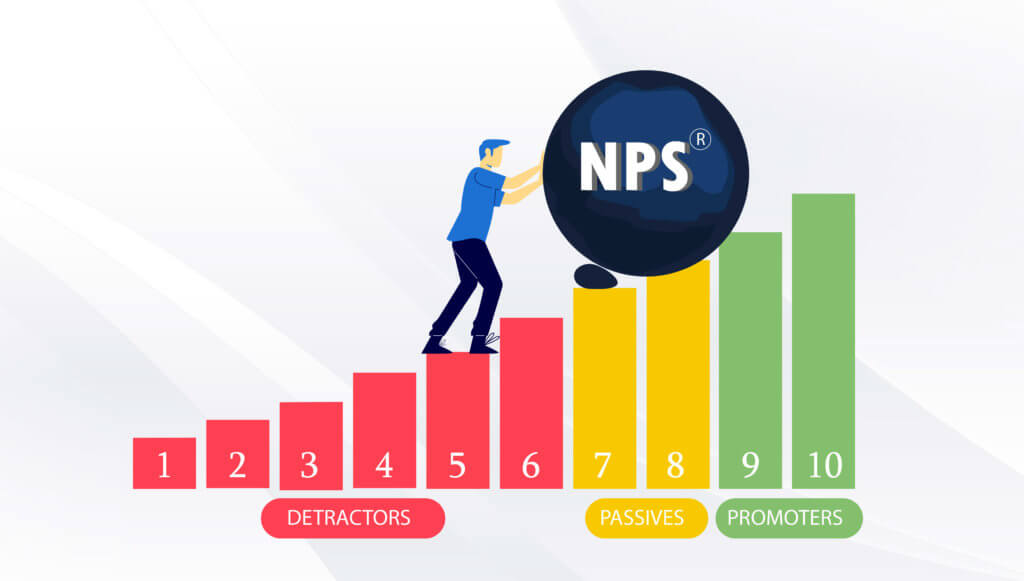
Converting passives into promoters is a two-fold process. One, if their NPS is neutral and they haven’t shared any qualitative responses, reach out to them and understand their issues. Second, if they have given qualitative responses, treat them as a detractor. Do everything you do for a detractor. Even some brands treat anyone scoring below 9 as a detractor.
Focus on the % of passives you are getting. If the number is really low compared to the detractors and promoters, it is okay. Focus on the detractors. If not, understand their segment, and their problems, and take all the actions that you are taking on detractors.
Create a FREE NPS program with SurveySensum

You have 500 promoters, but only 200 give you qualitative feedback, only 100 tell you the issues in your product and only 50 refer you to others. How do you categorize them? How can you create a plan of action if you don’t know how loyal or satisfied your promoter is with your brand?
Here’s how you can do it!
You can categorize your promoters into four different types.
Keep your promoters happy. They can offer a lot of valuable insights into what you are doing good and should continue to do. They give you innovative ideas and business opportunities.

Non-respondents are the most important yet most ignored segment that NPS does not include. They are the customers that did not respond to your surveys and are highly likely to churn. So what should you do?
You need to evaluate your customers. If you have any high CLV customers who are not responding to your surveys, treat them as more than a detractor. Call them up personally and understand their problem. There is nothing better than a one-to-one call to help get more responses.
TIP: An efficient NPS software helps you create NPS surveys and launch them at the right touchpoint and at the right time. Also, the tool helps share alerts to the team when a detractor shares their feedback and analyzes all the feedback. Not only it’ll help you close the loop in time, but it will also help you create an efficient NPS program.
Here’s a list of top NPS tools that can help you achieve the same.
The Net Promoter Score is an extremely valuable metric that can redefine your customer experience if used rightly. The deep insights it provides help a lot in ideating strategies to improve customer loyalty, drive customer base, and increase revenue.
It not only helps you gauge customer satisfaction and loyalty but also helps you identify ways to improve, prioritize reaching out to the detractors, and boost referral marketing. And as you know referred customers have a 16% higher lifetime value and ROI than others. So, improving NPS continuously is more like a necessity.
So, focus on building great customer experiences that create promoters to reach the same level as companies like Costco, Apple, Dillards, Amazon, and Southwest Airlines whose NPS scores are above 70.
And if you have detractors, you now know what to do! 🙂
